Trail Stories: America is a choose-your-own-adventure game that takes you on a journey through the wilds of 1930s America. You choose between friends, enemies, animals, and mysteries to explore and decide how to deal with them. Each one increases your character’s memory, but also rewards if you succeed. Trail Story is for 2-4 players, can be played in about 2 hours, and is recommended for players 10 years and older. The game is designed by Dan Manfredini and published by Wizkids. Dan reported from Gen Con 2024, but also reviewed Princes of Florence, Blob Party, Yosemite, and Marvel Remix.
What’s in the box?
- 4 player placards
- 1 large board
- 2 small boards
- 80 story cards
- 4 dice
- 8 Trinket Tokens
- 40 Story Tokens
- 24 Food Tokens
- 4 Wanderer Pawns
- 4 Hope Markers
- 72 Skill/Experience Cubes
- 9 Despair Cards
- 24 Trinket Cards
- 24 Ability Cards
- 6 campsite cards
- 4. Journals
- 24 Inspiration Crystal
- 52 Wondrous Tokens
- 1 score pad
- 4 reference cards
- 1 Story Token Bag
How do I play?
In the 1930s, you and your fellow players are wanderers exploring rural America. The focus of the game is to create stories, collect story cards, and record those stories in your journal using story tokens. There are ways to earn points here and there throughout the game. Story cards aren’t the only thing you’ll have in your journal at the end of the game – that’s a big part of the game.
On your turn you perform one of five actions: Scouting adds a story token to the border between your current location and other spaces adjacent to it. Story tokens are explorers, and are triggered when you perform a movement action, while Scouting places more story tokens and gives you experience points for each token you draw. Experience points are used to reflect different actions, which we’ll explain later.
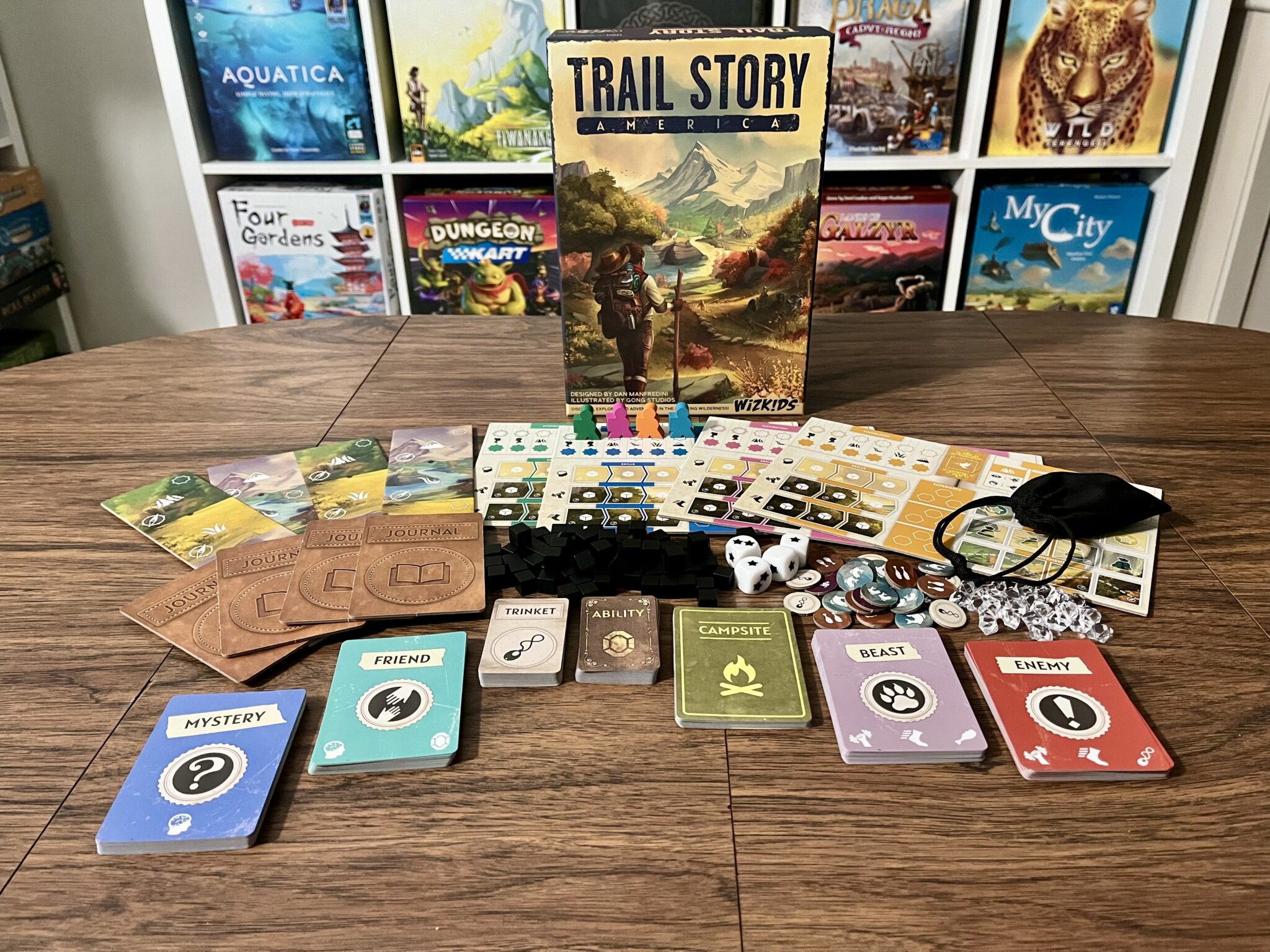
When you move, you move as many spaces as your current status allows. You can upgrade this to move further over time. After moving, you choose one story token to be involved. Flip the matching card and you will see several options. Take action using skills such as intelligence, strength, and agility, and place cubes of those skills in the experience next to it. Depending on how many cubes you use for that skill, you can roll one die each, and moving your inspiration crystals will give you another die for each. You roll the dice and must roll at least the number of stars that match the story token involved. If you succeed, you get the reward shown, if you fail, you get the failure reward. Either way, you get that story card and story token.
Camping is a way to reset your skills. When you perform this action, you flip over a Campsite card. Some cards give you additional benefits, but also meals that allow you to gain skills and restore inspiration by returning nut and berry tokens, fish and meat tokens. All other players can decide whether to join that player if they are within the indicated distance and give up a story card to gain the benefit shown on the card.
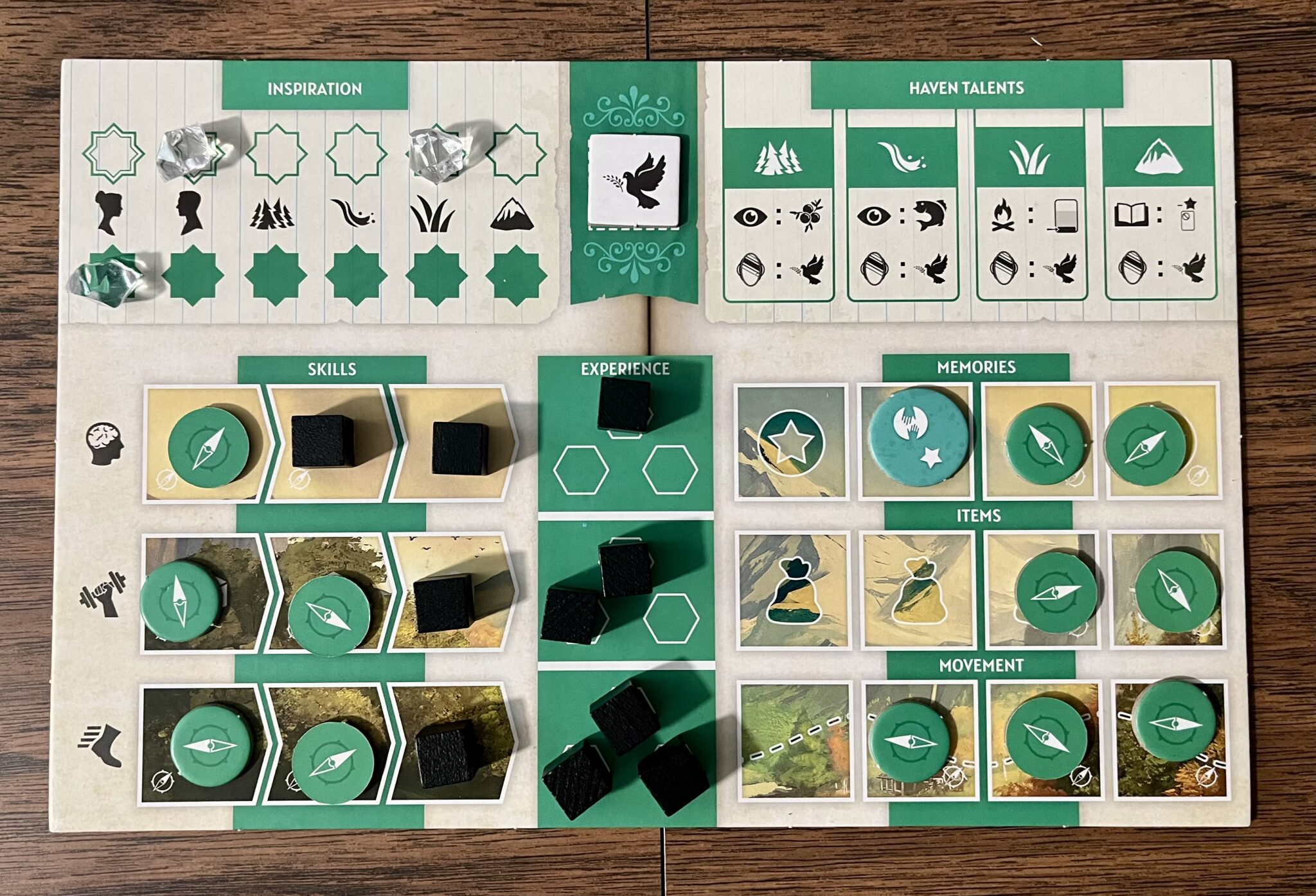
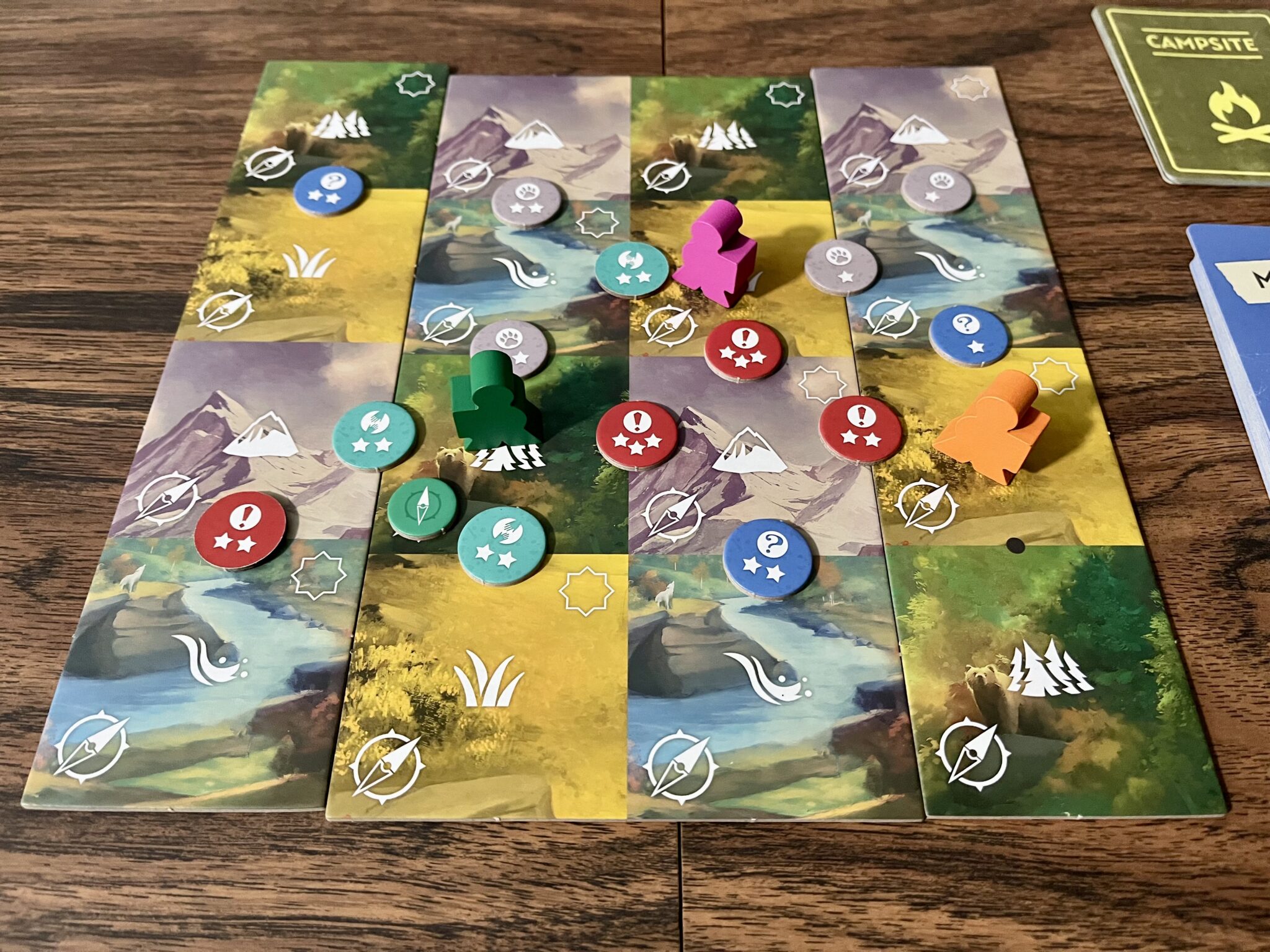
Reflection is a way to use experience to find haven or gain inspiration. When you get 3 experience points back from the same column, you remove one of the wanderlust tokens from that column and place it on your space on the board. This frees up space for more skills or allows you to hold more tokens of a certain type. Adding these wanderlust tokens to the board gives you points at the end of the game, and clearing out a certain type of token gives you extra points if you have a story card in your journal that represents that goal. Removing 4 experience points from any column allows you to find inspiration if you are in a space that allows inspiration. This gives you another way to use inspiration to add dice to your rolls as you play the game.
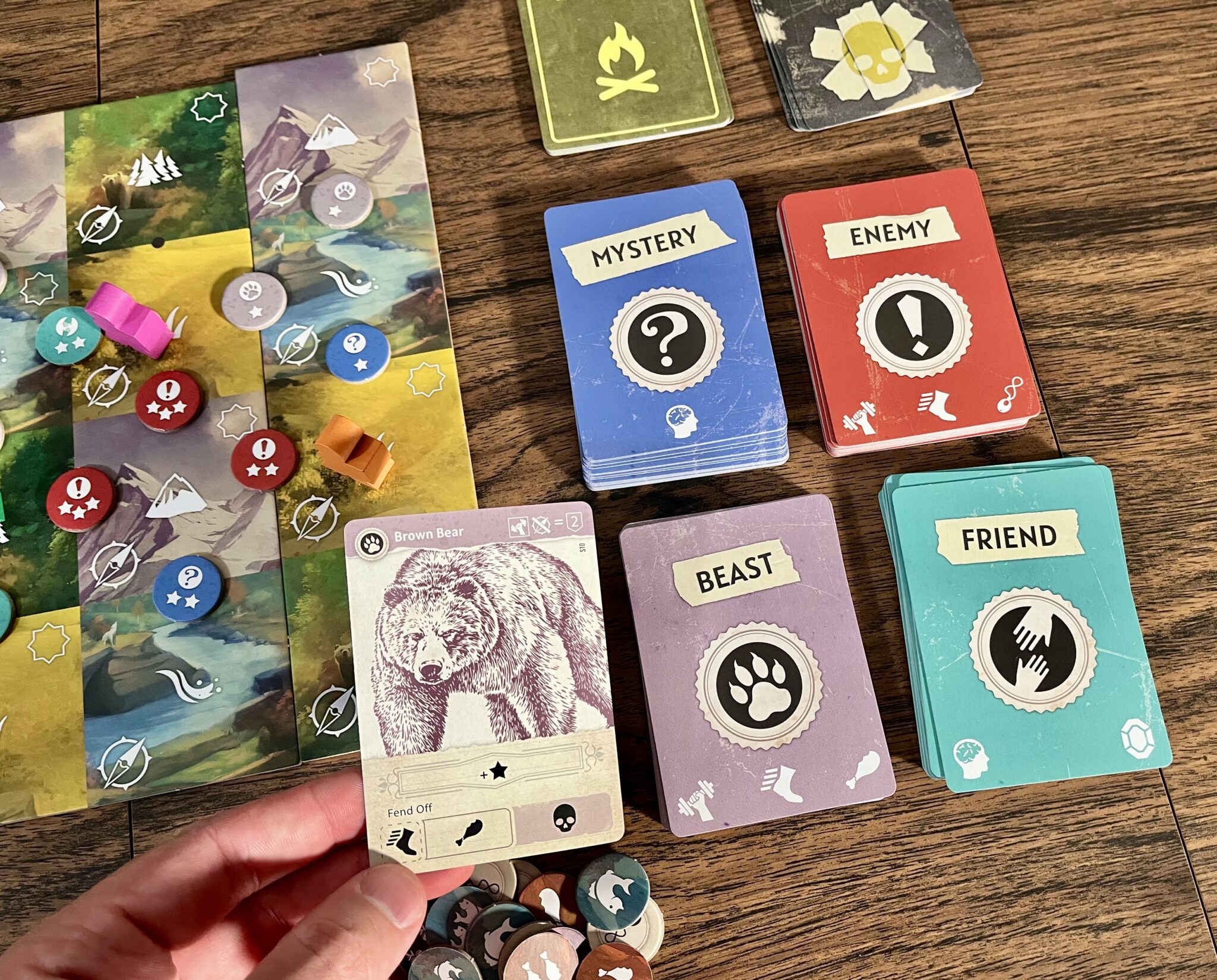
Finally, journal actions allow you to exchange story tokens and place story cards at the bottom of your journal to earn points. Each card by itself earns one point, but each card also lists an objective to earn additional points. You’ll need story tokens with a total of two stars to initially journal, and then you’ll need four stars to place a card in your journal.
The game ends when two players have four journal story cards, one player has five journal story cards, or every space on the board has a shelter. Players earn points for each shelter, the total number of wandering tokens on the board, each journal card, the score bonus listed on each card, and each trinket or item. They also exchange skills, experience, and unused inspiration for points. Some despair cards can also modify the score. The player with the most points wins the game.
verdict
It still amazes me how much fun you can get from such a small number of components. The game generates enough story to make it feel personal. It’s exciting when you turn over a card because it prepares your skills to some degree, but seeing what you can engage with is also an exciting part of the game. The extra rewards also help you know what to do next, but if nothing else, it’ll make you want to explore more and turn over another story card if you’re ready.
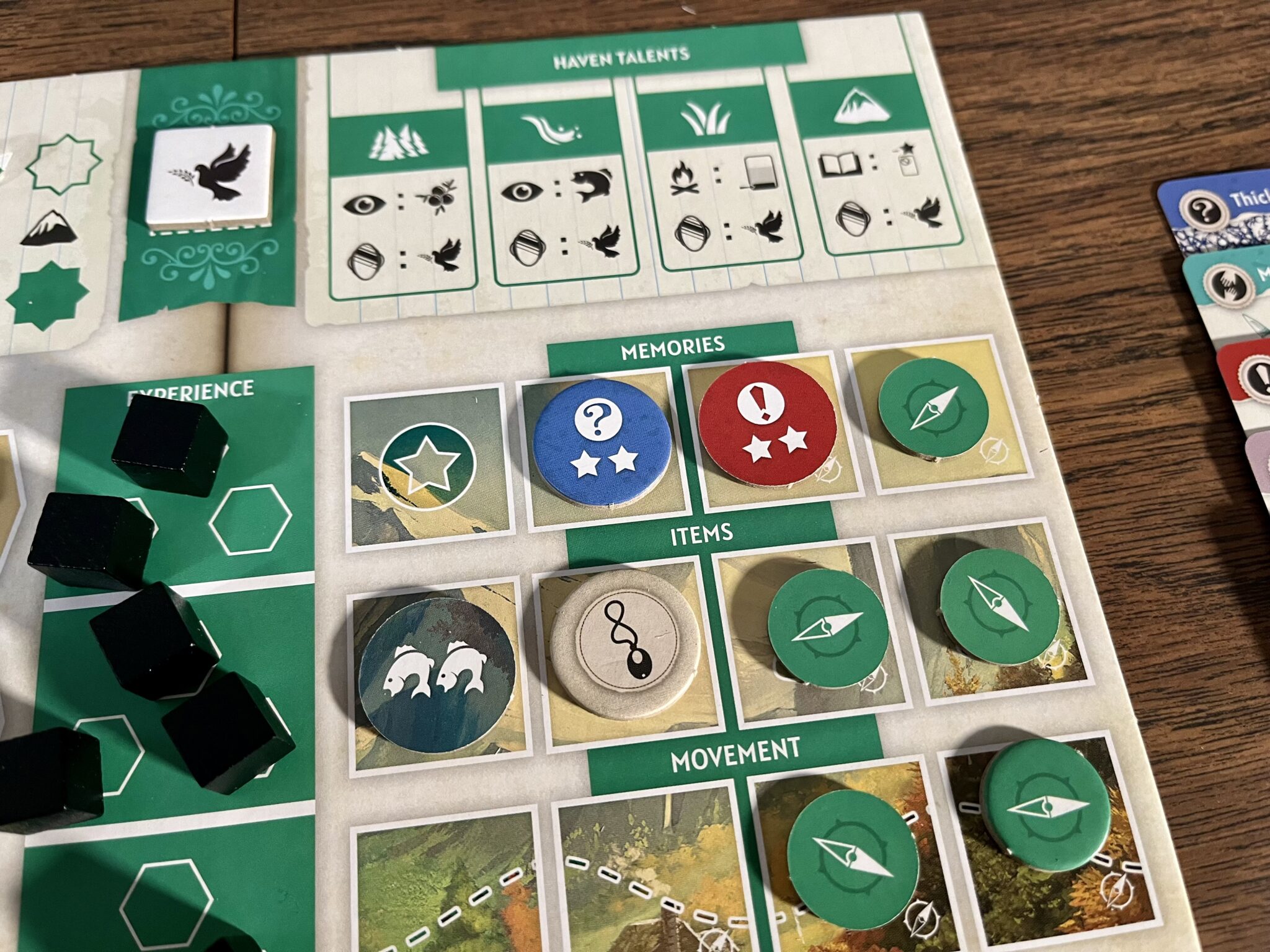
This is one of those games where you start out in a certain direction, but the story and the things you interact with lead you down new paths, paths that you probably didn’t plan for when you started the game. Maybe you pursue a certain way to gain end-game points from your journal story cards, or you place more and more wanderlust tokens on the board. However you start out, that doesn’t necessarily mean that’s your plan for the entire game.
The best thing about this game is the story and the feeling of accomplishing something big. Solving a mystery that has puzzled people for years, wrestling a bear with your bare hands, exploring a random cave to see what’s inside. All these things can happen in this game, and it’s fun to have these stories and to execute them well. But remember that you will probably choose what to do depending on the rewards you can get and what could happen if you fail. Is a particular card worth it? Do you want to use it because the reward is not very big? Whatever you understand, it is up to you to make the decision to try it or not.
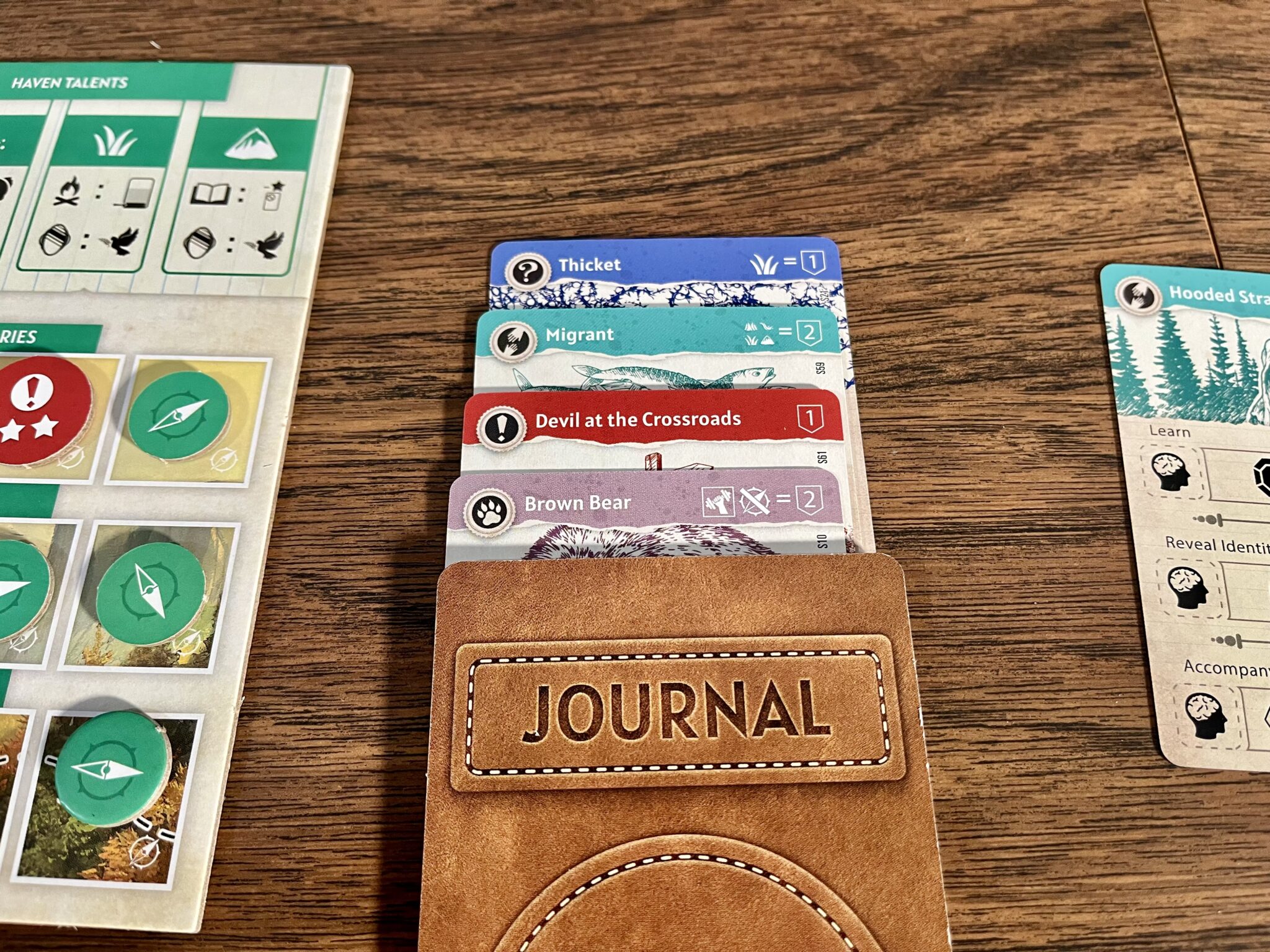
The name of this game, “Trail Story: America,” just makes me wish there were more Trail Story games. How about 1930s Australia? Or Europe? I wish there were more Trail Story games with fun stories and great ways to mechanically achieve stacked goals of becoming stronger, smarter, faster, and acquiring more.
Image courtesy of WizKids
Do you have any strong feelings about this piece that you’d like to share, or is there anything else you’d like to discuss with fellow Fundamentalists? Community servers to join the conversation!
Source: The Fandomentals – www.thefandomentals.com




